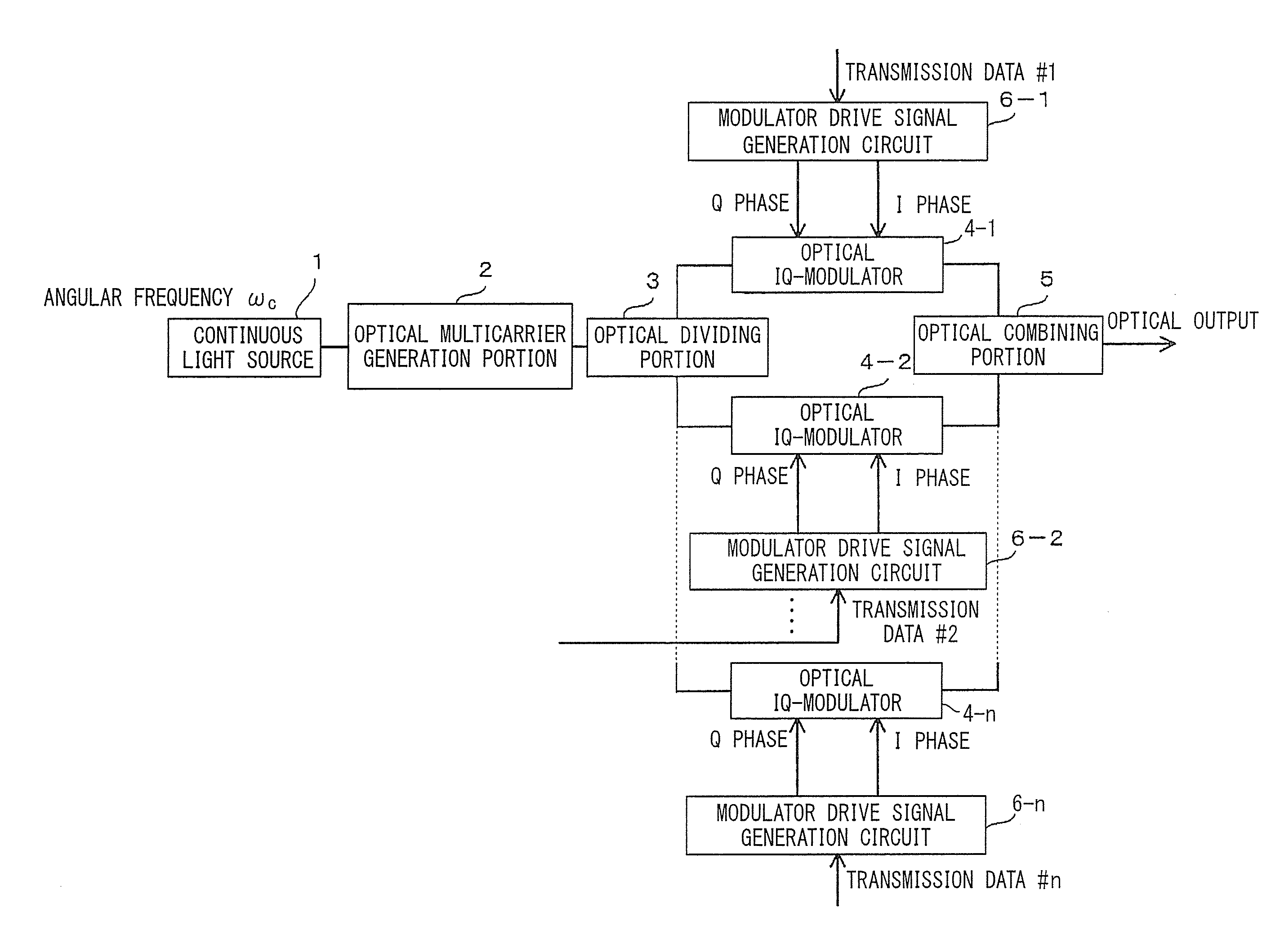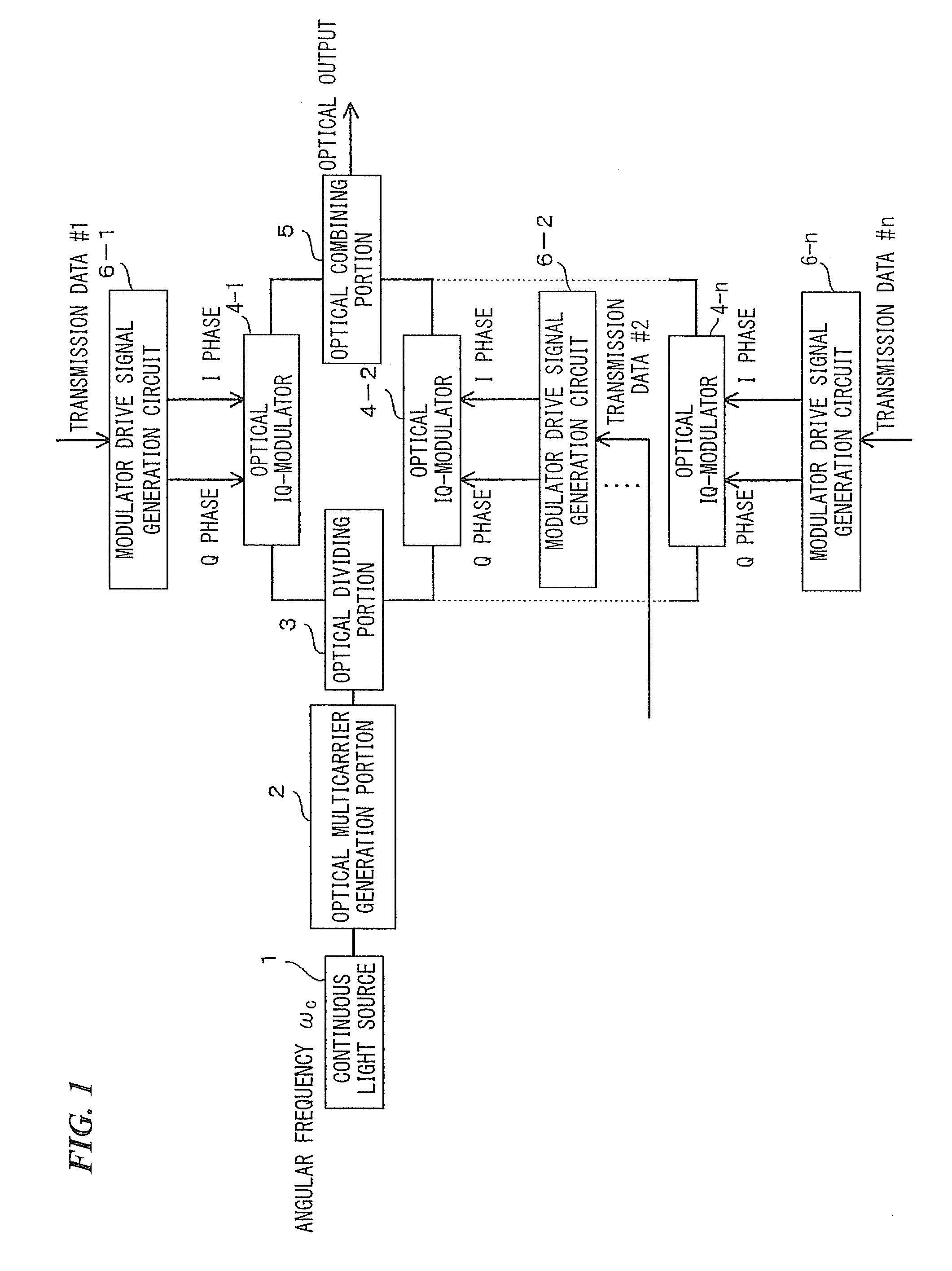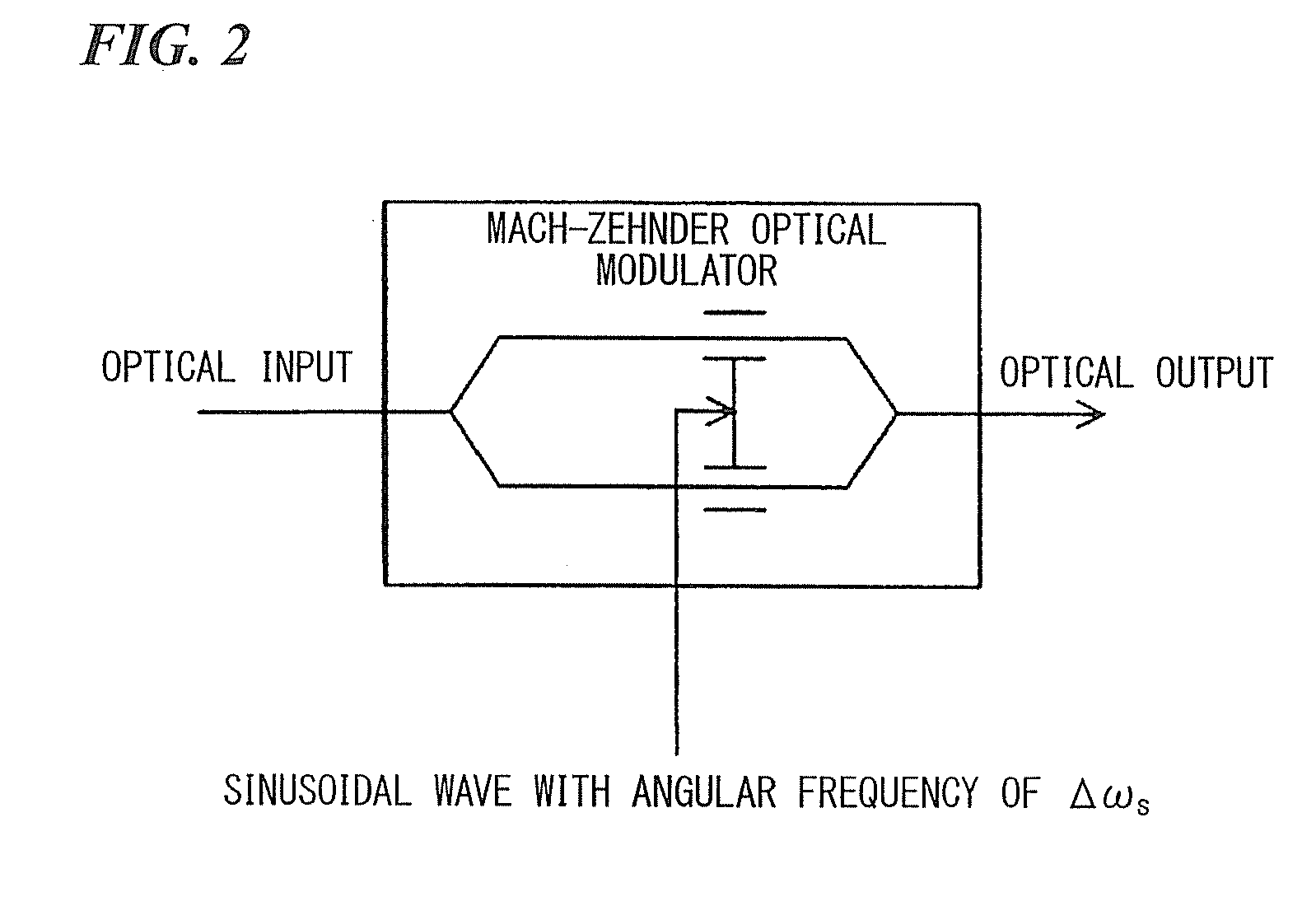Optical modulation circuit and optical transmission system
- Summary
- Abstract
- Description
- Claims
- Application Information
AI Technical Summary
Benefits of technology
Problems solved by technology
Method used
Image
Examples
first embodiment
[0066]An optical modulation circuit using a multi-wavelength light source as a first embodiment of the present invention will be described with reference to FIG. 1 to FIG. 4B.
[0067]In the present embodiment, the multi-wavelength light source is made of a continuous light source 1 and an optical multicarrier generation portion 2.
[0068]FIG. 1 is a diagram showing a configuration of the optical modulation circuit of the present embodiment. As shown in FIG. 1, the optical modulation circuit of the present embodiment includes: a continuous light source 1 for outputting continuous light with an angular frequency of ωc with a constant power; an optical multicarrier generation portion 2 for generating n (n≧2) optical multicarriers from an optical carrier emitted from the continuous light source 1; an optical dividing portion 3 for dividing the optical multicarriers according to their wavelength; optical IQ-modulators 4-1 to 4-n for generating optical subcarriers in which phase-shift keying ...
second embodiment
[0083]A second embodiment of the present invention will be described with reference to FIG. 5 to FIG. 8. In the present embodiment, the description is for the case where the distance between the optical subcarriers is equal to the symbol rate of the optical subcarriers.
[0084]FIG. 5 is a diagram showing a configuration of an optical transmission system of the present embodiment. The optical IQ-modulators 4-1 and 4-2, the optical multicarrier generation portion 2, and the modulator drive signal generation circuit 6-1 and 6-2 in the optical transmitter 20 of the present embodiment are configured similarly to those in the first embodiment, which are shown in FIG. 1 and FIG. 3. In this configuration, it is possible to superimpose phase-shift keying on each optical subcarrier. In the present embodiment, quaternary differential phase-shift keying (DQPSK) is employed.
[0085]It is assumed that the bit rate of the data #1 and the data #2 that are respectively input to the modulator drive signa...
third embodiment
[0094]An optical modulation circuit of a third embodiment of the present invention will be described with reference to FIG. 9 and FIG. 10. In the second embodiment, the description has been for the case where a plurality of optical subcarriers on which differential phase-shift keying (DQPSK) is employed are generated. However, in the third embodiment, the case where phase-shift keying is superimposed on a plurality of optical subcarriers will be described.
[0095]The optical modulation circuit of the third embodiment has a configuration that includes: a continuous light source 1 for outputting continuous light with a constant power; an optical IQ-modulator 4 for generating subcarriers on which phase-shift keying is employed; and a modulator drive signal generation circuit 6 for generating a modulator drive signal from data, as shown in FIG. 9. A configuration of the modulator drive signal generation circuit 6 is shown in FIG. 10.
[0096]An optical carrier with an angular frequency of ωc...
PUM
 Login to View More
Login to View More Abstract
Description
Claims
Application Information
 Login to View More
Login to View More - R&D
- Intellectual Property
- Life Sciences
- Materials
- Tech Scout
- Unparalleled Data Quality
- Higher Quality Content
- 60% Fewer Hallucinations
Browse by: Latest US Patents, China's latest patents, Technical Efficacy Thesaurus, Application Domain, Technology Topic, Popular Technical Reports.
© 2025 PatSnap. All rights reserved.Legal|Privacy policy|Modern Slavery Act Transparency Statement|Sitemap|About US| Contact US: help@patsnap.com



